What's New
Displaying results 431 - 440 of 4052
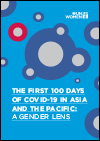
Resource | Publications,
This report presents a snapshot of the gender dimensions of the socio-economic impacts of the pandemic and captures promising practices for integrating gender in preparedness and response planning while proposing potential and entry points to mitigate the socio-economic impacts for women and girls in the region. It discusses the impacts and the potential way forward on issues including women, peace and security, gender and disaster risk reduction, ending violence against women and women’s economic empowerment.

Resource | Publications,
The COVID-19 pandemic disproportionately affects women migrant workers across Asia and the Pacific, in particular those with irregular migration status. Concluding the four-part guidance note series, this paper focuses on the emerging impacts of the pandemic on women migrant workers and recommendations to support governments, donors, civil society organizations, employers and the private sector in addressing those impacts. Essentially, more assertive and collective efforts are needed to ensure migrant-inclusive and gender-responsive measures in preventing further spread of the virus.
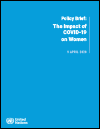
Resource | Publications,
Across every sphere, from health to the economy, security to social protection, the impacts of COVID-19 are exacerbated for women and girls simply by virtue of their sex. This policy brief explores how women and girls’ lives are changing in the face of COVID-19, and outlines suggested priority measures to accompany both the immediate response and longer-term recovery efforts.
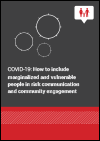
Resource | Publications,
Why include a protection, gender, and inclusion lens in risk communication and community engagement?
Women, the elderly, adolescents, youth, and children, persons with disabilities, indigenous populations, refugees, migrants, and minorities experience the highest degree of socio-economic marginalization. Marginalized people become even more vulnerable in emergencies.
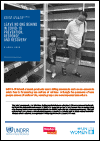
Resource | Publications,
This brief, developed by the UN Office for Disaster Risk Reduction, Regional Office for Asia and the Pacific, highlights the disproportionate impact of COVID-19 on certain groups of people and offers some key policy recommendations to ensure no one is left behind in COVID-19 prevention, response and recovery. The brief reflects the interventions and feedback of speakers and participants in the April 4, 2020, webinar on COVID-19: Leave No One Behind, co-organized with Help Age International and UN Women.

Resource | Publications,
As this annual report repeatedly demonstrates, UN Women is well positioned in the region to help link people and issues, and catalyse lasting results towards the globally agreed goal of achieving gender equality by 2030. Our triple mandate means we are a trusted advocate of internationally agreed norms, an effective implementer of innovative and transformative programmes, and a leader in mobilizing broader UN action on gender equality. Through diverse partnerships and networks, we accelerate progress, leveraging longstanding ties with governments and civil society advocates, and growing relationships with the worlds of business, media, sports and the arts.
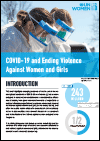
Resource | Publications,
This brief highlights emerging evidence of the impact of the recent global pandemic of COVID-19 on violence against women and girls. It makes recommendations to be considered by all sectors of society, from governments to international organizations and to civil society organizations, in order to prevent and respond to violence against women and girls, at the onset, during, and after the public health crisis, with examples of actions already taken.
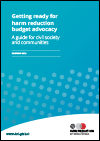
Resource | Publications,
How money is collected and distributed through public budgets influences the lives of millions of people in every country in the world. Those decisions might ensure food and shelter for many, or deprive others from essential healthcare services. Budget advocacy, which is a tool to influence those decisions, can make an impact on millions of lives.
Essential healthcare includes harm reduction services for people who use drugs. These services – such as needle and syringe programmes (NSP), opioid agonist therapy (OAT), drug consumption rooms (DCRs), overdose prevention with naloxone, and drug checking – protect against HIV, TB and hepatitis C (HCV) and save lives. Not only are they effective, they are cost-effective and cost-saving, and they have a positive impact on individual and community health.
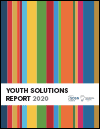
Resource | Publications,
The Youth Solutions Report is a flagship annual report under the Sustainable Development Solutions Network featuring youth-led solutions that offer sustainable solutions to the world’s biggest challenges. The Youth Solutions Report 2020, the fourth edition, captures key lessons and insights from 50 youth-led initiatives contributing to the Decade of Action to achieve the Sustainable Development Goals. Selected by an Advisory Panel comprising world-leading experts and crowdsourced from a vast network of partners, these youth-led solutions demonstrate the transformative role of young people in the realization of the 2030 Agenda. The Report also includes analysis by a range of partners on how to address barriers that hinder the contribution of young people to sustainable development.
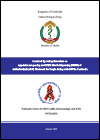
Resource | Publications,
Based on the available evidence and success stories such as those cited, more and more countries are scaling-up the implementation of appointment-spacing and MMD. This Standard Operation Procedure (SOP) is designed to help ART service providers in Cambodia implement appointment-spacing and MMD for eligible patients – that is, patients whose condition is determined to be stable – which will reduce the need for frequent visits and help to reduce providers’ workload.





